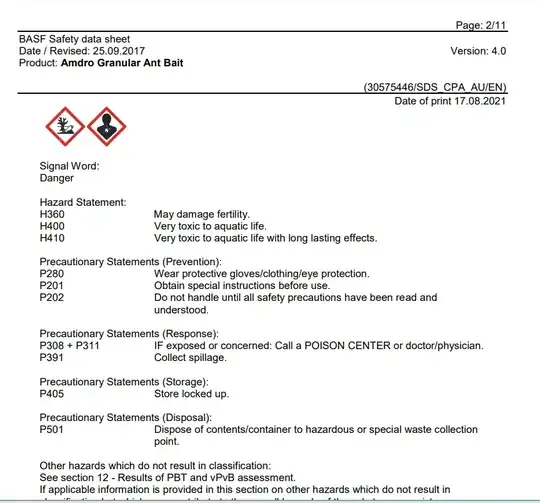How toxix is Amdro? According to the manufacturer, VERY (see the "signal word" below). This is from the MSDS (Safety Data Sheet) for Amdro:

Note the "May damage fertility" statement. That's YOUR fertility.
MSDSs apply when you add the product, but since the manufacturer says that it is effective against ants for three months, then it's not leaching out of your garden very soon.
DO NOT PLANT ROOT CROPS IN THAT GARDEN.
Here's the EPA sheet on it. Note that there is a 12 hour restricted entry provision in it, which means that you shouldn't be anywhere near your garden for 12 hours after you apply the pesticide. This is most applicable in a greenhouse situation, however.
For what it's worth, I was a certified pesticide applicator in Wisconsin ten years ago. This required me to pass a state-administered test on pesticide application, storage, and disposal, and included information on proper PPE to wear when applying pesticides. The two most lethal pesticides for humans are insecticides and fungicides. I refuse to use either. And BTW, "organic" doesn't mean safe, as organic pesticides can kill you. Liquid nicotine is a great pesticide - it also quickly kills a human.
